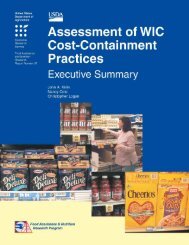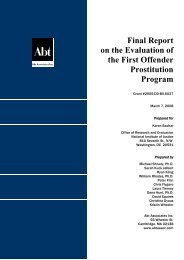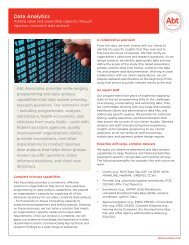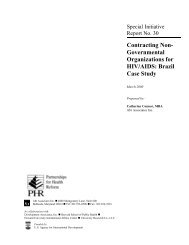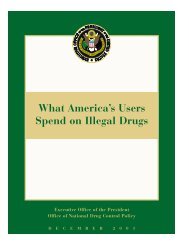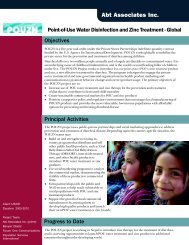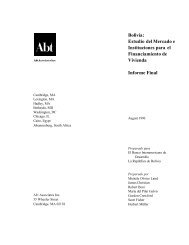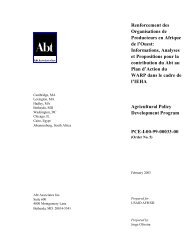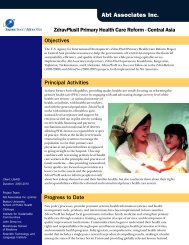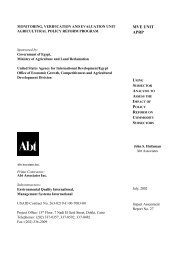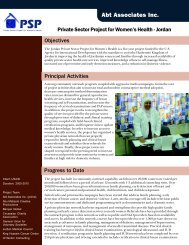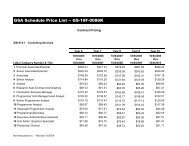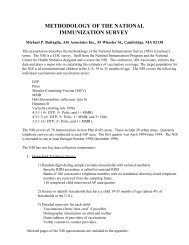Fertilizer Production And Marketing In Egypt ... - Abt Associates
Fertilizer Production And Marketing In Egypt ... - Abt Associates
Fertilizer Production And Marketing In Egypt ... - Abt Associates
Create successful ePaper yourself
Turn your PDF publications into a flip-book with our unique Google optimized e-Paper software.
to reduce its share of domestic production. Since early 1997, the share of PBDAC has decreased and<br />
the share of the private sector increased again.<br />
Looking more broadly at the production of all chemical fertilizer, there has been some privatization of<br />
the public sector companies since the mid 1990s. Before 1996, all factories producing fertilizer were<br />
all under public sector management. Currently, the production of phosphorus chemical fertilizer is 100<br />
% under the management of the private sector. About 75 % of nitrogen fertilizer production is now<br />
in companies organized under the private sector law 1 *. Even though there are no barriers to limit the<br />
private sector in the production of chemical fertilizer, private investors find it easier to buy public sector<br />
companies instead of establishing new ones. Therefore, the number of producing factories changed ver<br />
little during the period of the APRP.<br />
1.3 Role of APRP<br />
APRP started after the 1995 crisis, when the fertilizer market was highly disturbed and PBDAC was<br />
controlling the major part of the domestic distribution of fertilizer. The private traders were suffering<br />
from the unstability of the market caused by the unclear policy of the GOE with regard to the fertilizer<br />
market. Consequently, APRP designed a number of benchmarks to improve the operation and<br />
performance of the fertilizer market. Among the different benchmarks were those related to fertilizer:<br />
Tranche I:<br />
I.B.1. Reduce the tariff on nitrogen fertilizer ( ammonium nitrate and urea) from 30 % to 10% .<br />
I.B.2. Review ex-factory prices and set them in light of border prices, adjusting the prices at least<br />
once per season. The definition of border prices will be according to the monitoring plan.<br />
I.B.3. Eliminate government quota allocations of fertilizer, except in the case of market failure.<br />
I.B.4. Based on the study of fertilizer production to be completed by February, 1996, the GOE will<br />
adopt a time phased liberalization and privatization to fertilizer production, marketing and<br />
<strong>In</strong>ternational Trade.<br />
I.B.5. Privatize one fertilizer plant by September 1996.<br />
Tranche II:<br />
A3. GOE will issue instructions to fertilizer factories to sell fertilizer without quotas for any group<br />
under commercial conditions and will develop an overall fertilizer policy framework emphasizing<br />
fertilizer production, pricing trade and private sector participation.<br />
1 Abu Qir is owned by the public sector but organized under Law 159 for private companies.<br />
2



